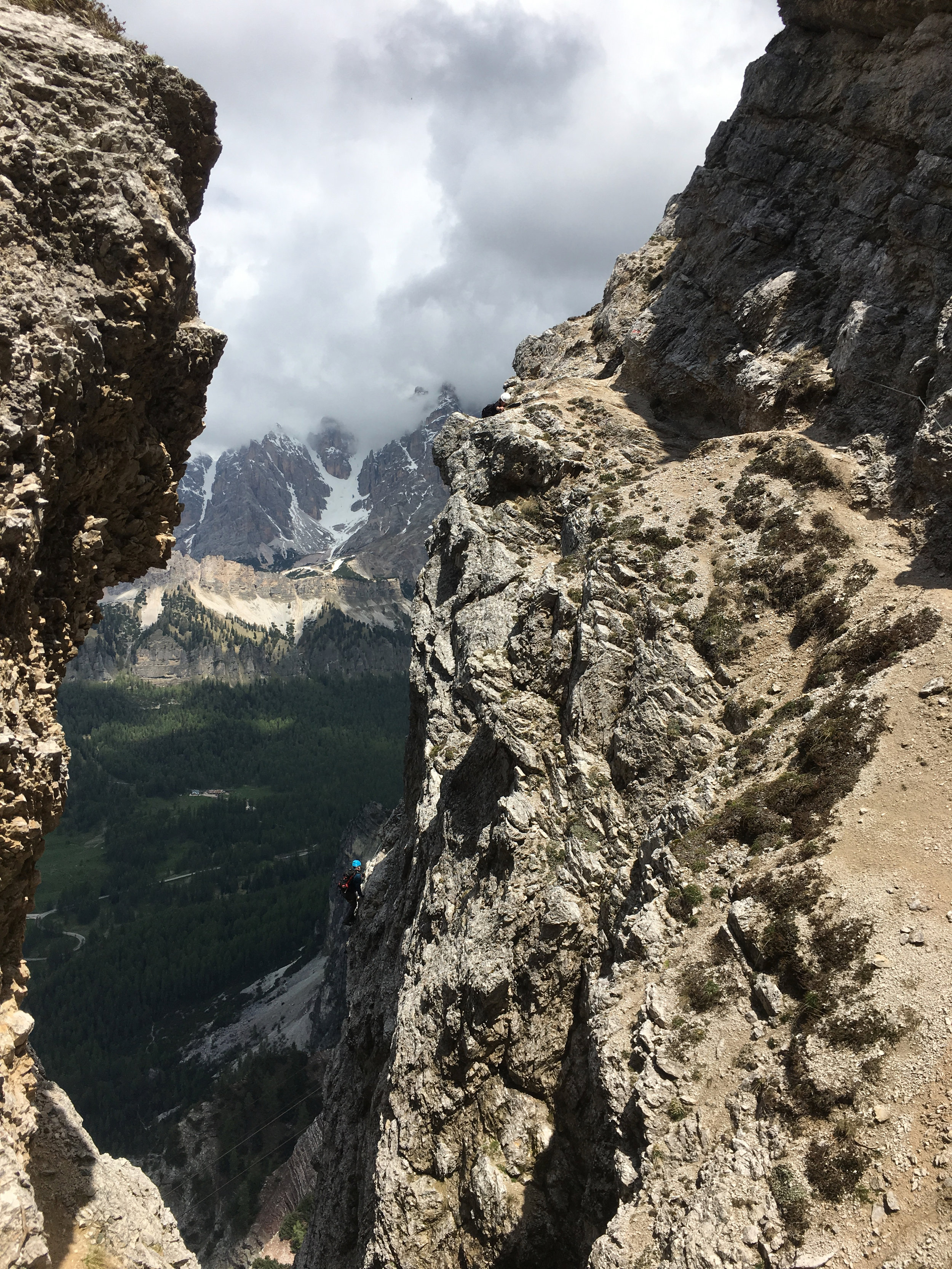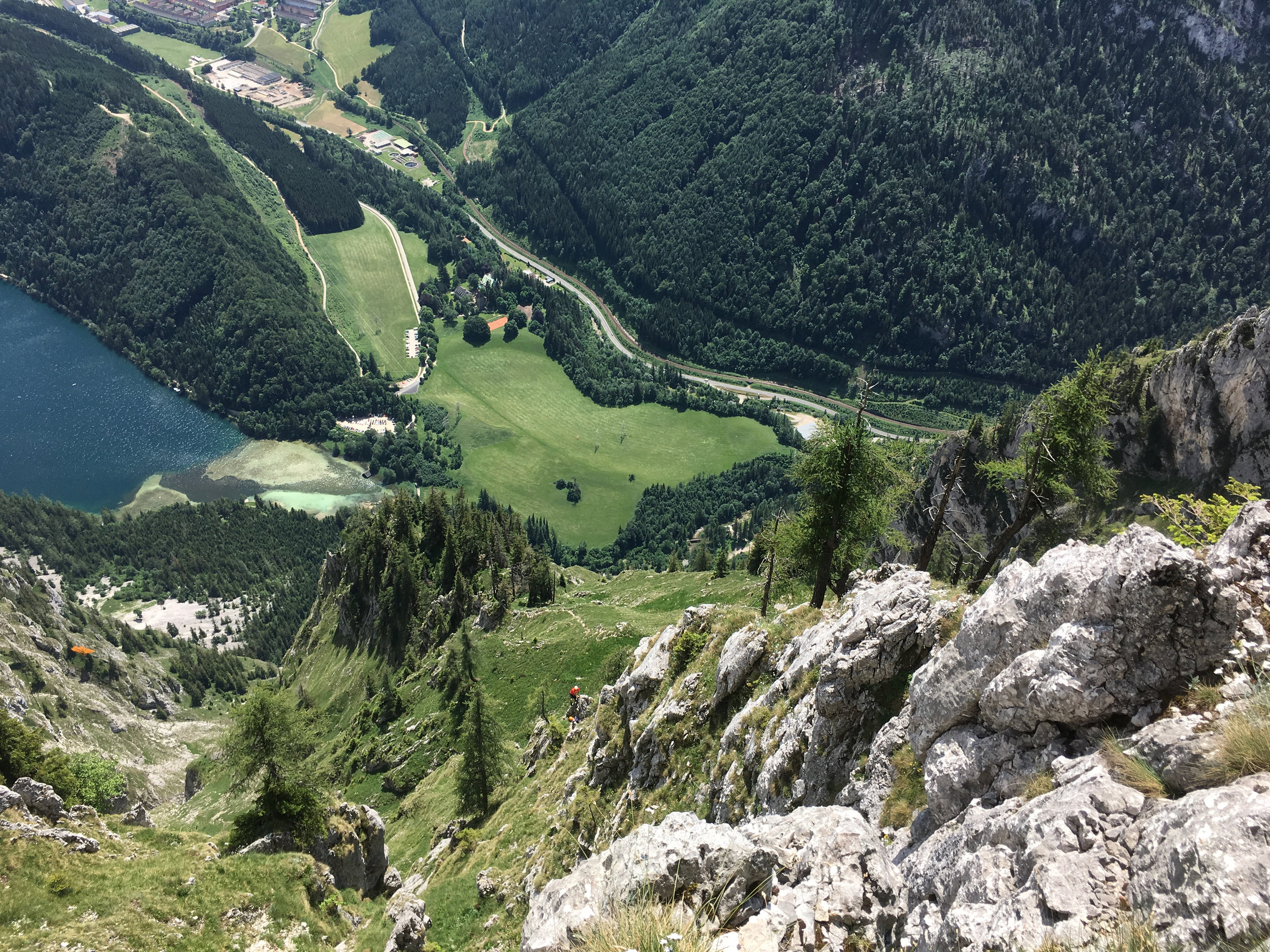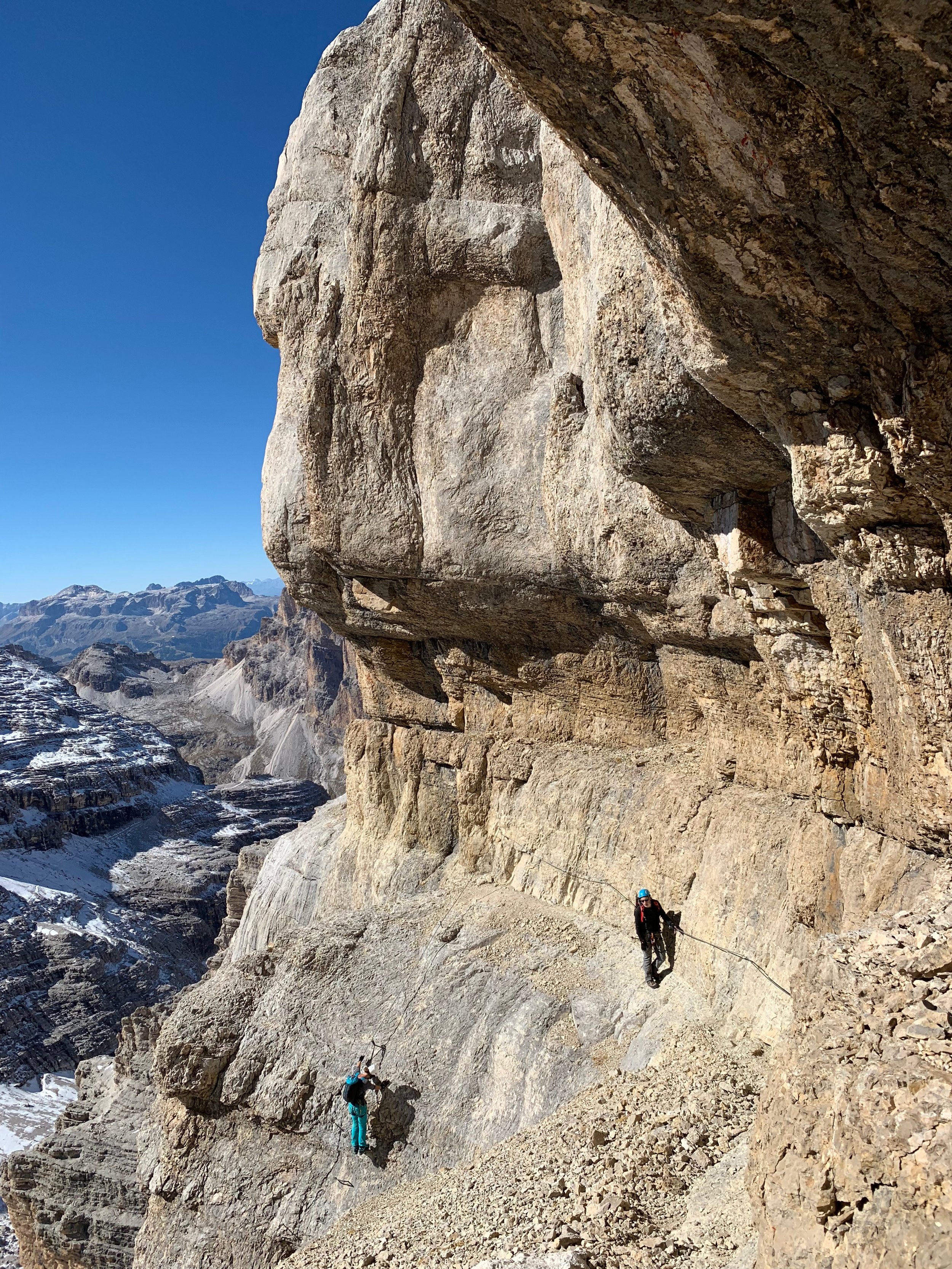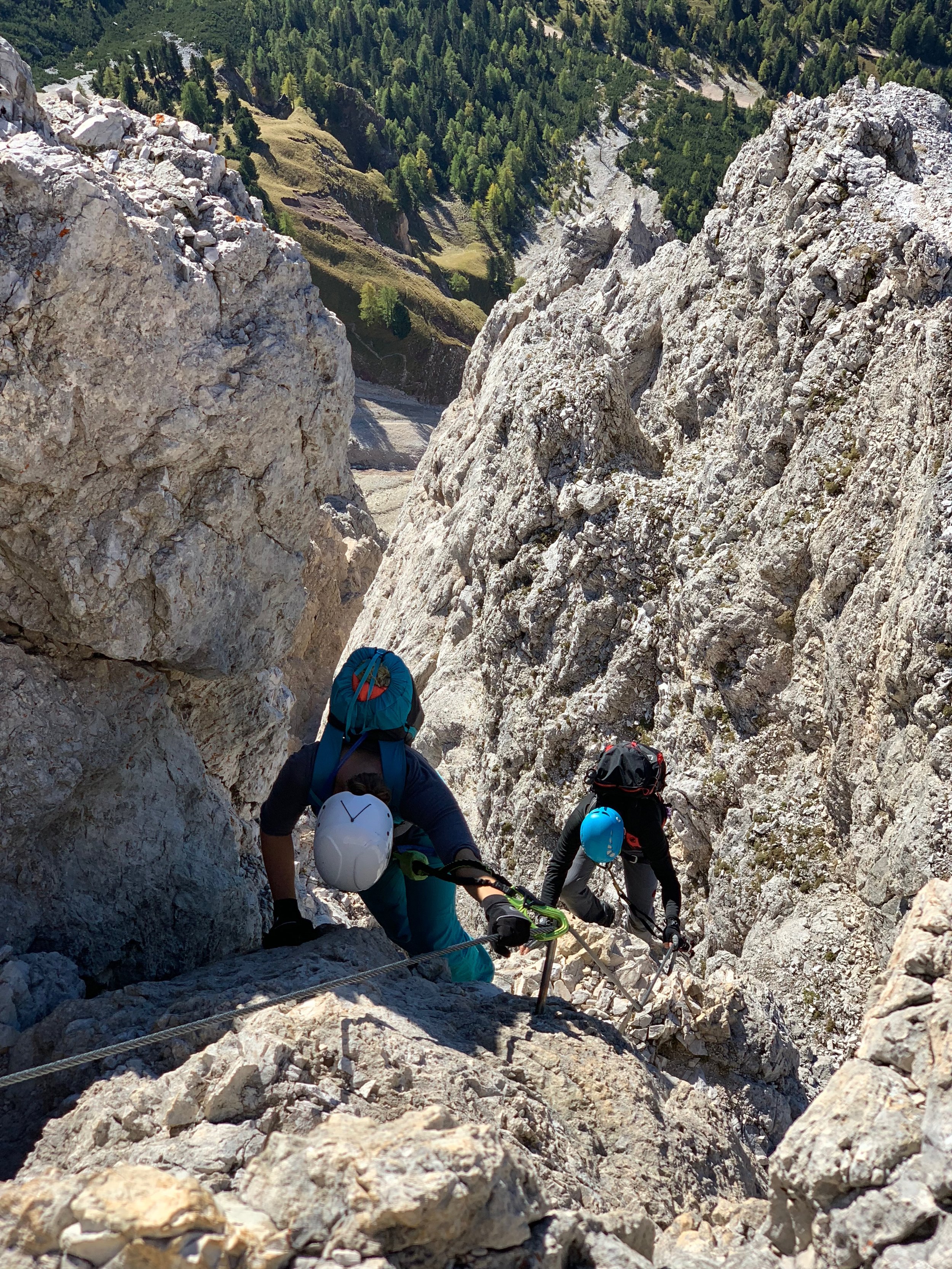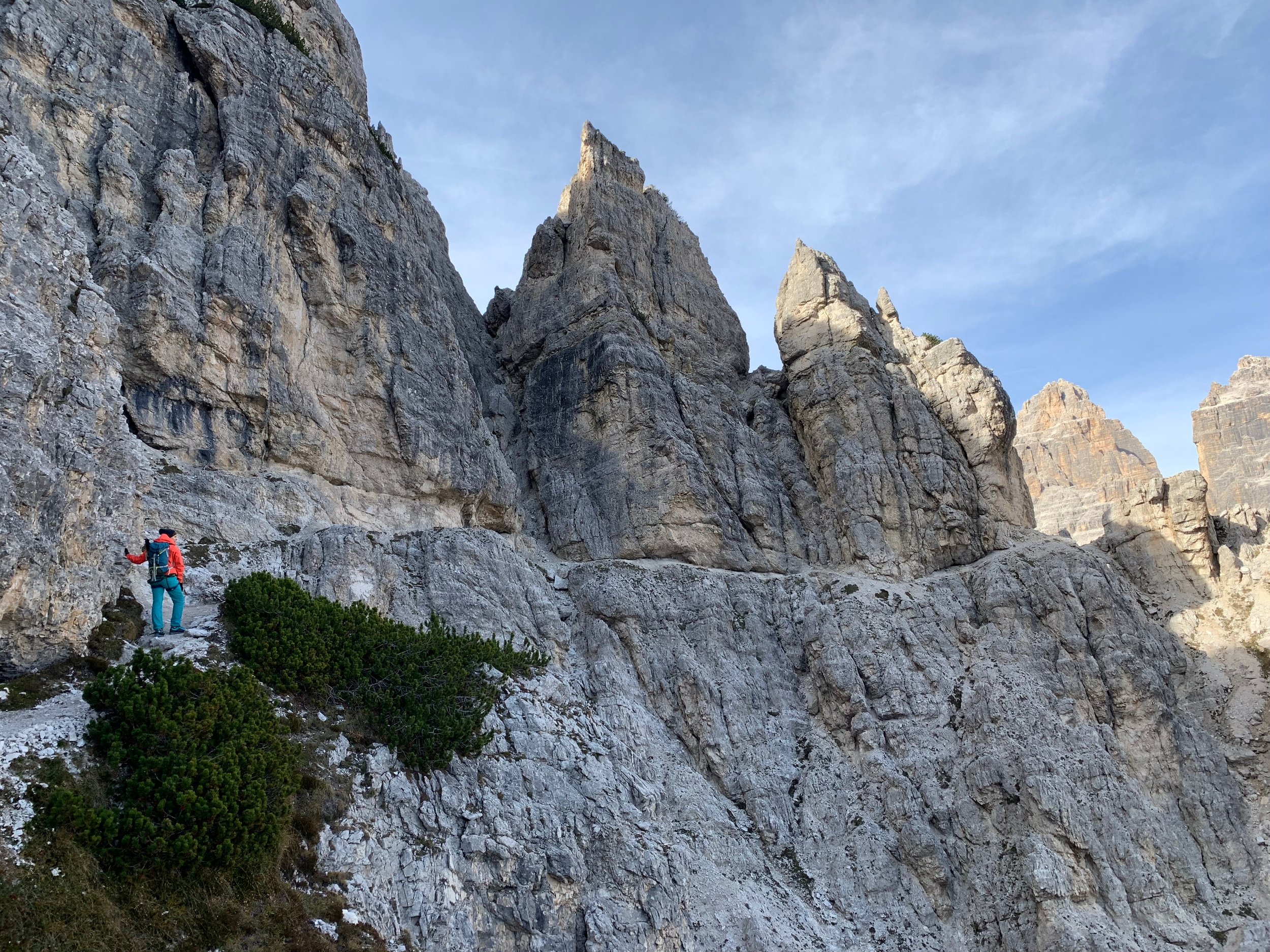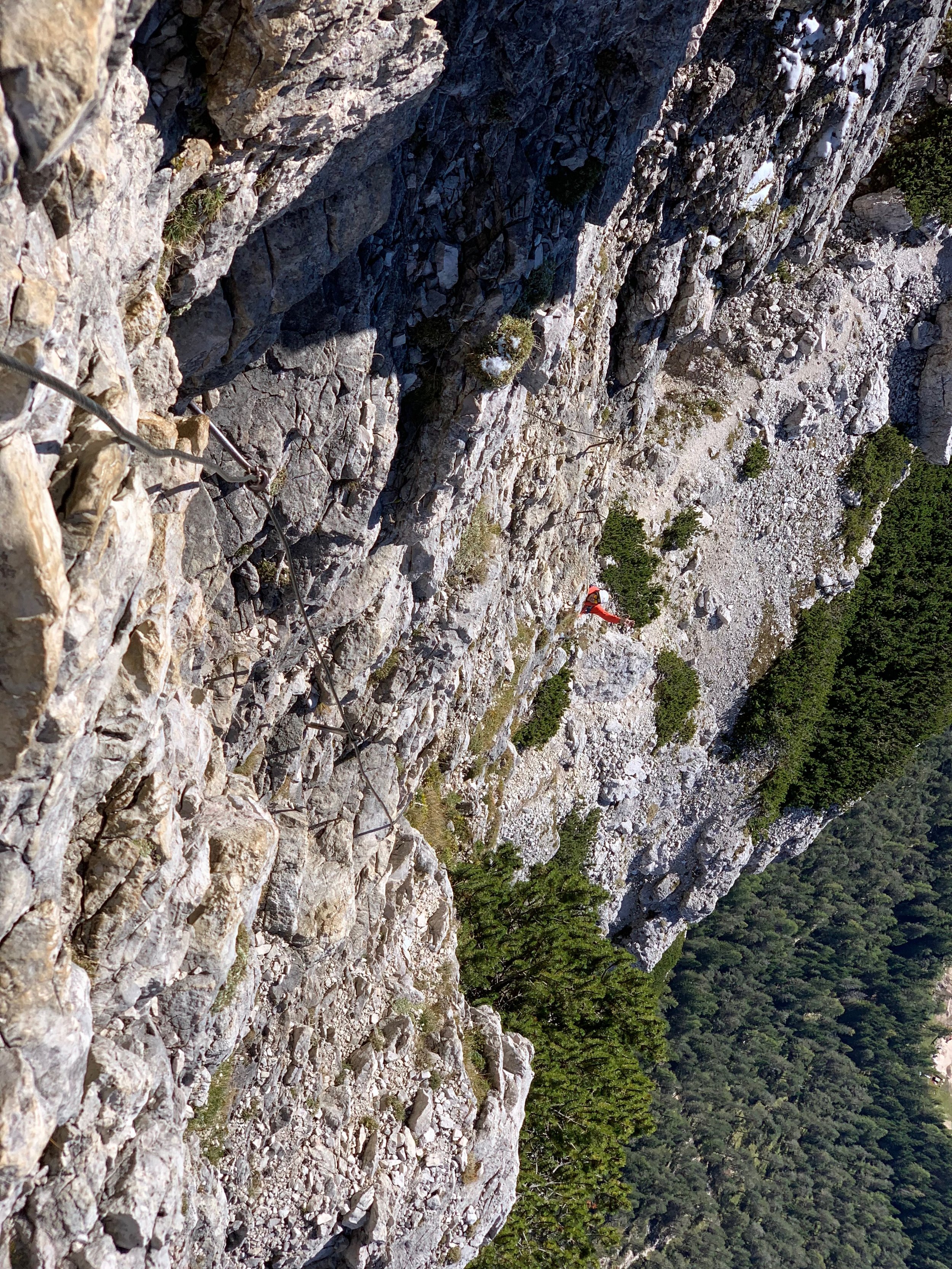My ferratas
Grete Klinger-Steig
B/C, 600 / 1200 Hm
(Austria, July 2020)
Jungfernsteig
B, 100 / 1050 Hm
(Austria, July 2020)
Renè de Pol
B/C, 260 / 1200 Hm
(Italy, June 2020)
Giuseppe di Olivieri
+ Gianni Aglio
D, 580 / 1250 Hm
(Italy, October 2018)
Bonacossa + Merlone
B/C, ∼1000 Hm
(Italy, October 2018)
Albino Michielli Strobel
C, 450/1050 Hm
(Italy, Oct 2018
& June 2020)
Kaiser-Franz-Josef
D, 860/1000 Hm
(Austria, June 2018)
Ski Club 18
D, 360/650 Hm
(Italy, May 2018, June 2021, October 2022)
Giovanni Barbara
A, 100/200 Hm
(Italy, May 2018)
Degli Alpini
C/D, 330/580 Hm
(Italy, October 2017
& June 2020)
(Difficulty grade according to the Austrian system,
Hm = height meters)
Via ferrata
The term “via ferrata”, known as “Klettersteig” in German-speaking countries, refers to protected climbing routes found in the mountains. In their modern form, ferratas consist of a steel cable fixed securely to the rock that runs along the route. Climbers use a standard hip harness with two flexible safety lanyards with attached carabiners that can be used to secure themselves to the cable, thus limiting any fall. The steel ferrata cable also serves as an aid to climbing, alongside iron rungs, pegs, carved steps and even ladders and bridges that are provided over the most difficult parts of the route.
What I love about ferratas is how they allow me to tackle routes and mountains I wouldn’t dream of trying without the added layer of safety. On many ferrata routes, one can reach truly spectacular exposed ridges and peaks in relative security – though the mental side of things is definitely up to the climber to handle. I also love the sheer physicality of ascending hundreds of vertical meters at a rapid pace, covering way more (and faster) ground than would be possible with free climbing.


